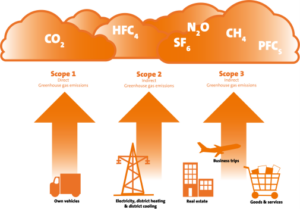On January 9, CES 2024 kicked off in Las Vegas, USA. The exhibition welcomed more than 4,000 exhibitors and about 130,000 visitors. CES senior vice president Jim Fabrizio said that the exhibition area was equivalent to 43 football fields, where various companies gathered to exchange and showcase new inventions. Artificial intelligence (AI), digital health, smart home and sustainability technologies were among the areas of interest.
Cutting-edge technology products were dazzling, such as the standalone AI device R1 that can serve as a home assistant, the smart mirror BMind that introduces generative AI into the bathroom, the smart glasses Solos AirGo 3 that use ChatGPT for real-time translation, the smart pillow Motion Pillow that can solve snoring problems, the smart lipstick Lipcure Beam that can achieve lip diagnosis and care, the smart carpet Carepet that can comprehensively detect pet health, and more.
This year’s CES, generative AI was everywhere. One of the special new products was the new AI device R1, created by Rabbit, a US human-computer interaction startup. It is about half the size of an iPhone and uses a large action model (LAM). Users do not need applications and login, they only need to ask simple questions, and they can achieve queries, play music, call a taxi, shop, send messages and other operations.
TVs, refrigerators and other appliances also have access to smart assistants. Telly, a US startup, previewed a “Hey Telly” voice assistant based on ChatGPT, which can identify family members on the TV and provide personalized suggestions. Samsung’s 8K QLED series TVs will have AI image enhancement capabilities, which are said to be the industry’s first to directly convert standard-definition content to 8K resolution.
In the new category of AI PCs, Lenovo’s Think, Yoga and other series of new products are equipped with Creator Zone generative AI software, which supports text-to-image, AI question and answer and interaction functions based on large models. Some models are also equipped with a one-click “AI Now” Copilot button, which makes it easier to access daily AI companions.
On the mobile phone side, Asus ROG Phone 8 Pro gaming phone has added generative AI capabilities, including semantic search, AI wallpaper generator, AI video call noise reduction function and more.
WeHead launched a different kind of display, which “concretizes” the large model, and can provide a literal meaning of “face-to-face” AI digital human experience as shown in the picture. It can “see” the user and initiate a conversation, and enhance this experience by controlling 3D devices, rotating robot heads and imitating human non-verbal communication through AI Agent.
Amazon’s Alexa assistant teamed up with Character.AI to launch customized character assistants. Users can get book recommendations from a “librarian” role, talk to a mock version of “Socrates”, or get fitness advice from a “personal trainer” role.
In the wearable device field, Solos, a US smart glasses company, exhibited a smart glasses Solos AirGo 3 equipped with ChatGPT, the core function of which is real-time translation.
Oclean, a subsidiary of Huami, launched an AI toothbrush Oclean X Ultra Wi-Fi digital toothbrush. It will talk to the user while brushing their teeth and give suggestions on how to improve.
Baracoda, a French smart health technology company, exhibited the world’s first smart mirror BMind based on generative AI, which can provide personalized suggestions based on the user’s mental state, such as light therapy, guided meditation and self-affirmation, to help improve mood.
In addition, the trend of generative AI “getting on board” is obvious. Mercedes-Benz launched a conversational AI virtual assistant, which can provide suggestions to users based on the context and invoke different emotions. Volkswagen announced that all its models will be equipped with ChatGPT, which will be launched in Europe in the second quarter of this year.
As you can see, from “big items” such as cars and TVs, to small electronic products such as glasses and toothbrushes, generative AI has carried out a “carpet-style” landing.

.jpg)




